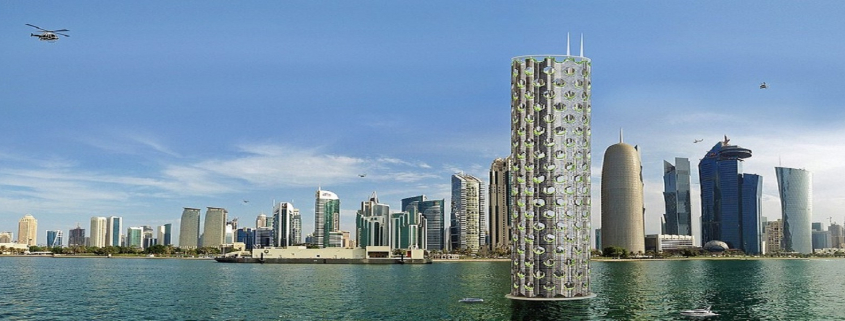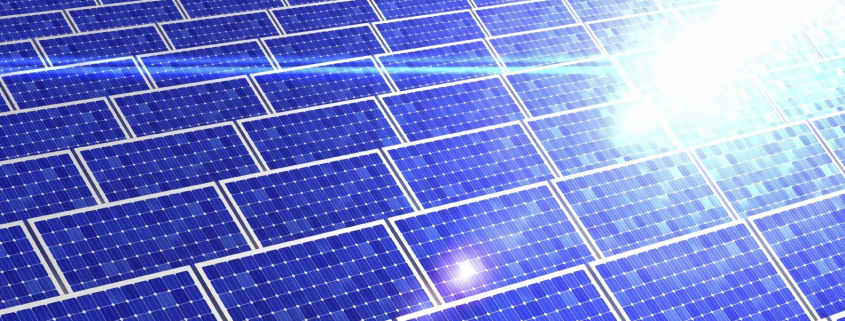A stunning set of designs has envisaged what an entire city within a single skyscraper could look like.
The ‘Vertical City’ project features a futuristic-looking tower, which would be population-dense yet still feel spacious, holding 25,000 people at any given time.
Unlike traditional skyscrapers, which are self-contained and shut off from the natural environment, the 180-floor building would allow the outside world to become an intrinsic part of the interior.

Nice view: Architect Luca Curci believes that his Vertical City concept could improve the heal and wellbeing of residents
Huge hexagonal voids would run up the side of the tower, allowing sunlight and rainwater to nourish the plant life inside.
The bold project was overseen by Luca Curci, an architect based in Bari, Italy.
“We wanted to introduce a new approach to the architecture of contemporary cities – the idea behind the project is that the tower can be built anywhere,” said Curci.

Bee hive: Huge hexagonal voids run up the side of the tower, allowing sunlight and rainwater to nourish the plant life housed inside
If constructed, the 18-story building would be 2460ft (750 metres) tall. It would boast a green area of over 21,527,82 square ft (20
0,000 square metres), including the public garden square at the top of the building.
The foundations would be built into the seafloor, meaning that a number of floors would be underwater. Here parking, ‘technical areas’ and spas, meditation centres, gyms and luxury hotels rooms would be housed.

The building was designed to be energy-independent, producing energy from photovoltaic glass and solar panels housed on the roof
Designers envisage that the Vertical City would be accessed by water, by land or by air. The circular basement would be equipped with external and internal docks and three entries. Large boats would dock at the external berths, allowing private smaller boats to navigate into the building itself. A semi-submersed bridge would also allow pedestrians, cars and public transport to reach the water-based city while a heliport would connect with the upper garden-square.
Though he does not have a specific city in mind for the tower, Mr Curci imagines the project most suited to the Middle East – near cities such as Doha, Abu Dhabi and Dubai.

The majority of the tower would be filled with green space – but there would also be room designated for offices and residents.
The building was designed to be entirely energy-independent, producing energy from photovoltaic glass and solar panels placed on the roof.

By having such a zero-energy building, the design team hope that such a tower would help societies rethink their relationships with nature
“The idea for this project started from the analysis of the skyscraper as a compact element, smooth and alienated from the surrounding space. The re-interpretation of this archetype and its linked way of life, conducted us to imagine an opened structure, equipped with green areas on each level, natural light and ventilation. Residents get into an healthier lifestyle, in connection with natural elements, and re-think the traditional concept of community and society,” Curci said.
Source: Daily Mail


